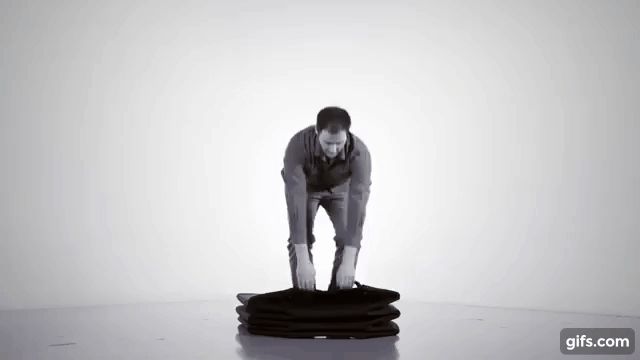No more snow shovelling?! Why more homeowners are opting for heated driveways
There are a few certainties of every Canadian winter: losing Tim Hortons’ Roll Up the Rim, witnessing the slow march of Ron MacLean’s pants up his chest on Hockey Hight in Canada, and a driveway that is frequently covered with snow and ice.We have no advice for the first two items, but there has been no shortage of solutions hawked by retailers for the latter. Ergonomic shovels, noisy snowblowers and heavy blades for pickup trucks are all on offer to homeowners for dealing with the annual onslaught of snow and sleet misery.Still, all those products require a person to haul themselves out of bed before sunrise to clear the accumulated white stuff before setting out on the morning commute. An increasing number of builders have taken to installing heated driveways for their residential customers — a solution which may smack of excess but could very well be the right solution for some people.Homeowners considering a heated driveway will find most contractors recommend one of two ways to bring the heat: electric or hydronic. Electric systems tend to be designed with a series of wires or cables woven into a grid pattern and embedded into the parking area just below its surface. Since these heated elements are designed to resist corrosion and damage, it should survive the typical Canadian winter. Alternatively, a hydronic system is made up of robust tubing which runs underneath the driveway’s surface. This long, thin, flexible piping is filled with a nonfreezing liquid solution which circulates through the pipes and runs through a boiler to keep the fluid warm. Most owners place the heating tank in a location close to the driveway, generally in the home’s attached garage, to maintain the liquid at a consistently warm temperature. Boilers are typically powered by electricity, although that juice can come from any number of sources — solar, fossil fuel, or directly from a power grid — depending on the home’s existing configuration.The radiant heat emanating from either of these systems is generally sufficient to melt the winter’s snow as it falls, preventing accumulation before snow gets a chance to pile up. This explains why a residence with a heated driveway will have a clear — but damp — parking area compared to their neighbour’s place which looks like the top of a powdered sugar doughnut. “Most of these (heated driveways) are best handled by a contractor with strong experience in concrete,” said Danny O’Connor, president of Will-Kare Paving. “The subsurface wires or piping which need to be installed for this type of system could get crushed or damaged during the heavy rolling required to smooth new asphalt.” Drainage is also key: Prep work for a heated driveway, which includes creating a flat and properly sloped base, is critical.The upfront cost for a heated driveway is much higher than a standard parking surface, given all the extra materials and labour required for install. A smart homeowner will budget triple the spend of a traditional driveway — and tucking any leftover money away for future operating costs would be wise. After all, one’s electric bill is likely to spike by approximately $500 per year since the heating system needs electricity to operate. Wire-grid installations will consume power directly (like an electric baseboard heater) while the hydronic systems will devour power by heating its boiler (like a hot water heater). Generally, the hydronic systems are cheaper to operate.Still, these costs may be worth it for some folks. Getting one’s driveway professionally cleared can run upwards of $100 per snowstorm, to say nothing of the time and effort required to do the job yourself and the expense of operating and maintaining equipment like a snowblower.


There are a few certainties of every Canadian winter: losing Tim Hortons’ Roll Up the Rim, witnessing the slow march of Ron MacLean’s pants up his chest on Hockey Hight in Canada, and a driveway that is frequently covered with snow and ice.
We have no advice for the first two items, but there has been no shortage of solutions hawked by retailers for the latter. Ergonomic shovels, noisy snowblowers and heavy blades for pickup trucks are all on offer to homeowners for dealing with the annual onslaught of snow and sleet misery.
Still, all those products require a person to haul themselves out of bed before sunrise to clear the accumulated white stuff before setting out on the morning commute. An increasing number of builders have taken to installing heated driveways for their residential customers — a solution which may smack of excess but could very well be the right solution for some people.
Homeowners considering a heated driveway will find most contractors recommend one of two ways to bring the heat: electric or hydronic.
Electric systems tend to be designed with a series of wires or cables woven into a grid pattern and embedded into the parking area just below its surface. Since these heated elements are designed to resist corrosion and damage, it should survive the typical Canadian winter.
Alternatively, a hydronic system is made up of robust tubing which runs underneath the driveway’s surface. This long, thin, flexible piping is filled with a nonfreezing liquid solution which circulates through the pipes and runs through a boiler to keep the fluid warm.
Most owners place the heating tank in a location close to the driveway, generally in the home’s attached garage, to maintain the liquid at a consistently warm temperature. Boilers are typically powered by electricity, although that juice can come from any number of sources — solar, fossil fuel, or directly from a power grid — depending on the home’s existing configuration.
The radiant heat emanating from either of these systems is generally sufficient to melt the winter’s snow as it falls, preventing accumulation before snow gets a chance to pile up. This explains why a residence with a heated driveway will have a clear — but damp — parking area compared to their neighbour’s place which looks like the top of a powdered sugar doughnut.
“Most of these (heated driveways) are best handled by a contractor with strong experience in concrete,” said Danny O’Connor, president of Will-Kare Paving. “The subsurface wires or piping which need to be installed for this type of system could get crushed or damaged during the heavy rolling required to smooth new asphalt.” Drainage is also key: Prep work for a heated driveway, which includes creating a flat and properly sloped base, is critical.
The upfront cost for a heated driveway is much higher than a standard parking surface, given all the extra materials and labour required for install. A smart homeowner will budget triple the spend of a traditional driveway — and tucking any leftover money away for future operating costs would be wise.
After all, one’s electric bill is likely to spike by approximately $500 per year since the heating system needs electricity to operate. Wire-grid installations will consume power directly (like an electric baseboard heater) while the hydronic systems will devour power by heating its boiler (like a hot water heater). Generally, the hydronic systems are cheaper to operate.
Still, these costs may be worth it for some folks. Getting one’s driveway professionally cleared can run upwards of $100 per snowstorm, to say nothing of the time and effort required to do the job yourself and the expense of operating and maintaining equipment like a snowblower.




















